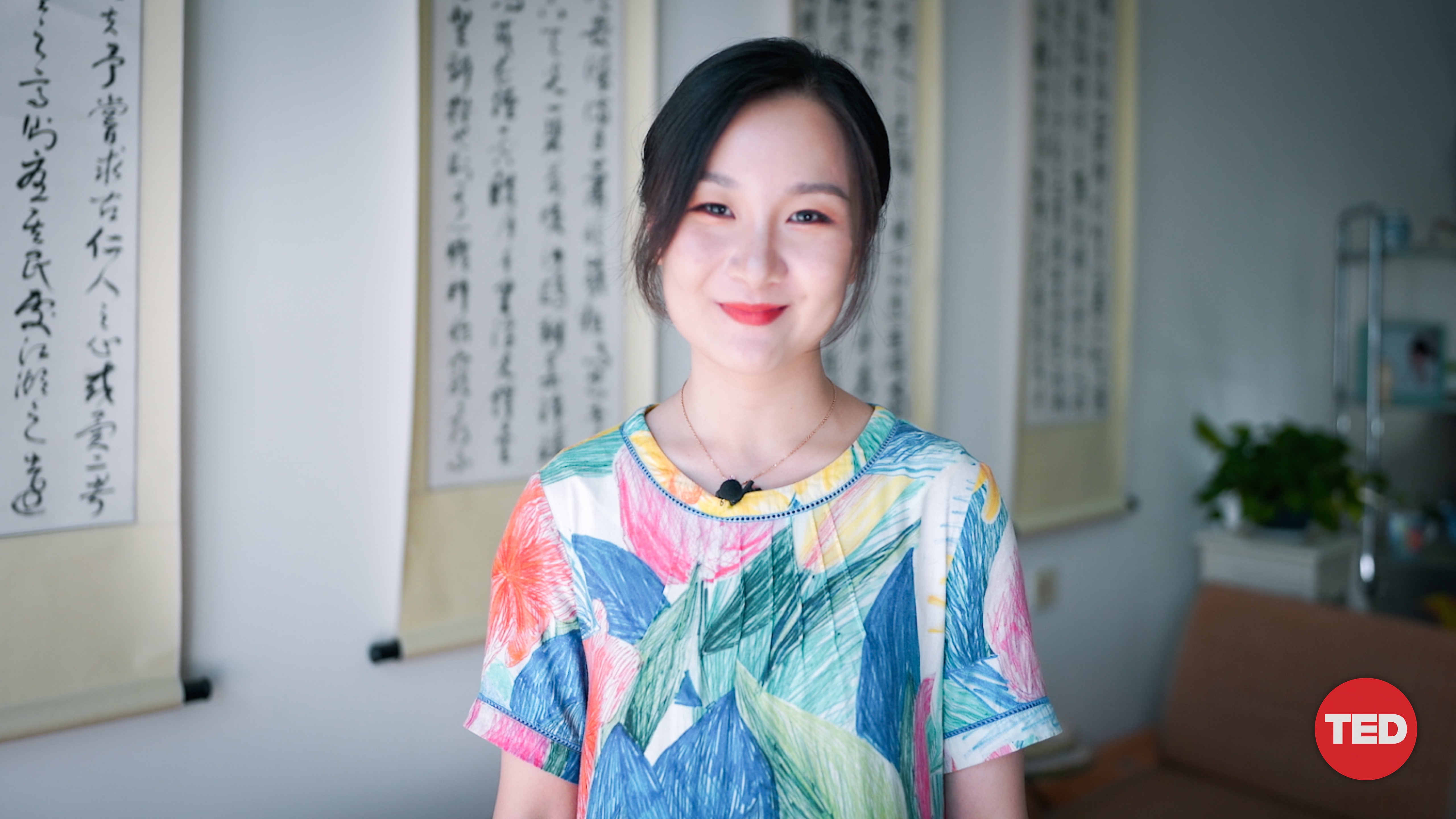
Is TikTok changing the way we work and learn? Qiuqing Tai talks about the rise of short-form videos at TED@BCG on October 21, 2020. (Photo courtesy of TED)
How can we make advances in technology that don’t require massive job losses? Work with nature to protect both the planet and humanity? Ensure all people are treated equitably? In a day of talks, interviews and performances, 17 speakers and performers shared ideas about a future in which people, technology and nature thrive interdependently.
The event: TED@BCG: Symbiotic is the ninth event TED and Boston Consulting Group have partnered around to bring leaders, innovators and changemakers to the stage to share ideas for solving society’s biggest challenges. Hosted by TED’s Corey Hajim along with BCG’s Seema Bansal, Rocío Lorenzo and Vinay Shandal, with opening remarks from Rich Lesser, CEO of BCG.
Music: The group Kolinga, fronted by lead singer Rébecca M’Boungou, perform the original song “Nguya na ngai” — a stunning rendition that’s equal parts music, poetry and dance.
The talks in brief:
Qiuqing Tai, video visionary
Big idea: Short-form videos — 60 seconds or less, made and shared on apps like TikTok, Snapchat and Instagram — are changing the way we work, communicate and learn.
How? More than 1.5 billion people around the world regularly watch short videos, and more than half of them are under the age of 24, says Qiuqing Tai. This bite-sized content is quickly becoming the new normal, with people turning to it not only for entertainment but also to discover new interests and skills. Meanwhile, businesses use short-form videos to find new customers and diversify their audiences. In 2019, Tai led a research study with TikTok, finding that the platform’s short-form content generated an estimated $95 billion in goods and services sold, and helped create 1.2 million jobs globally. There has also been an explosion in short-form educational content, as social enterprises and education startups experiment with 15-second videos for people who want to learn on the fly. There are valid concerns about this young medium, Tai admits — data privacy, the addictive nature of the format, the lack of contextual nuance — but, with the right investment and policymaking, she believes the benefits will ultimately outweigh the drawbacks.
Matt Langione, quantum advocate
Big idea: If not traditional supercomputers, what technology will emerge to arm us against the challenges of the 21st century?
What will it be? For nearly a century, we’ve relied on high-performance computers to meet critical, complex demands — from cracking Nazi codes to sequencing the human genome — and they’ve been getting smaller, faster and better, as if by magic. But that magic seems to be running out due to the physical limitations of the traditional supercomputer, says Matt Langione — and it’s time to look to newer, subatomic horizons. Enter quantum computing: an emerging hyper-speed solution for the urgent challenges of our time, like vaccine development, finance and logistics. Langione addresses fundamental questions about this burgeoning technology — How does it work? Do we really need it? How long until it’s available? — with a goal in mind: to disperse any doubts about investing in quantum computing now rather than later, for the sake of lasting progress for business and society at large. “The race to a new age of magic and supercomputing is already underway,” he says. “It’s one we can’t afford to lose.”
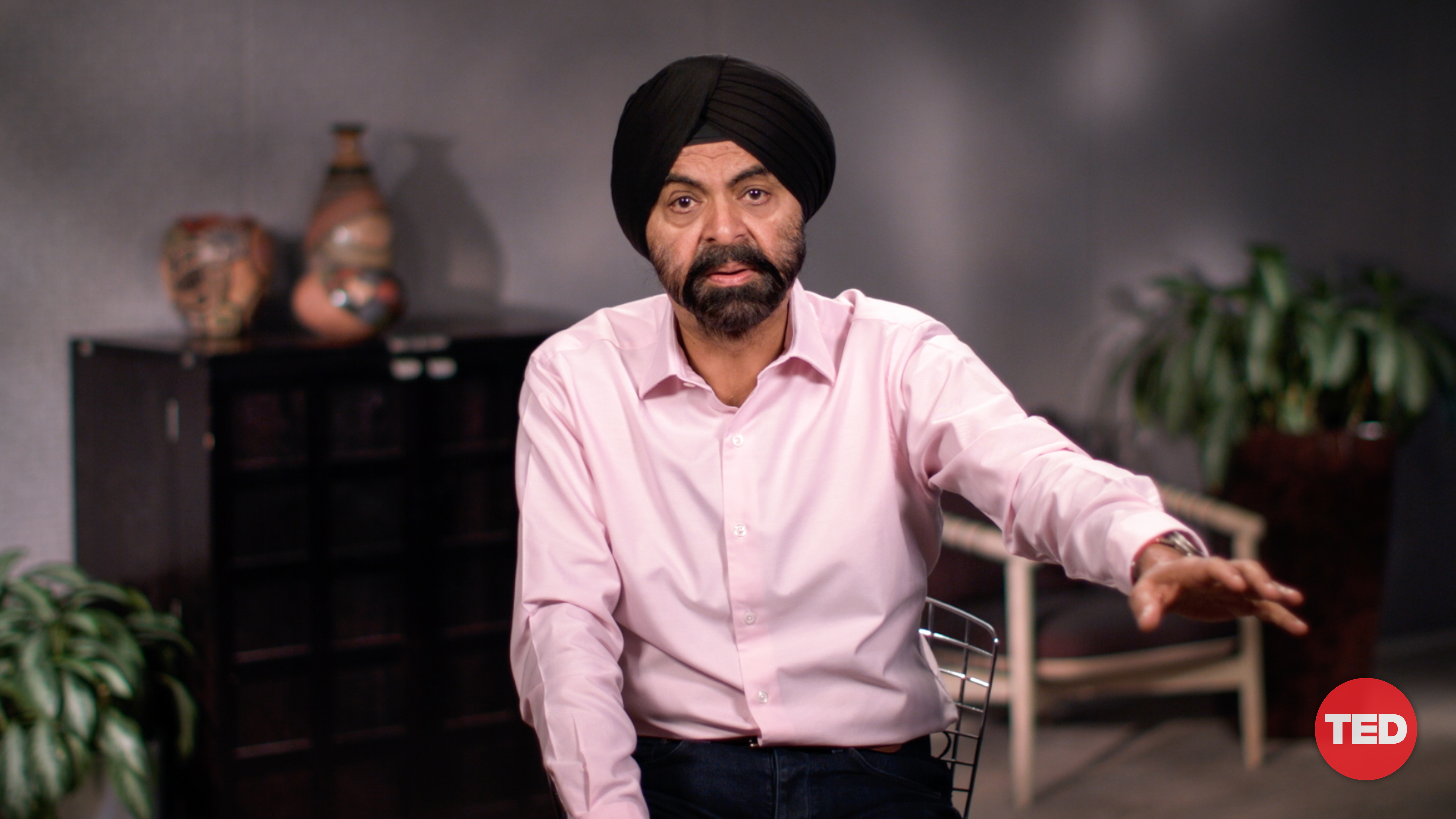
Ajay Banga, CEO of Mastercard, discusses financial inclusion and how to build a more equitable economy. He speaks with TED current affairs curator Whitney Pennington Rodgers at TED@BCG on October 21, 2020. (Photo courtesy of TED)
Ajay Banga, CEO of Mastercard
Big idea: Let’s introduce those who are un-banked or under-banked into the banking system via a mobile, digital economy.
How? Roughly two billion people don’t have access to banks or services like credit, insurance and investment — or even a way to establish a financial identity. These people must rely solely on cash, which can be dangerous and prone to fraud by middlemen (and costs about 1.2 percent of a nation’s GDP to produce). As an advocate of “financial inclusion,” Mastercard CEO Ajay Banga believes that banks, fintech and telecom companies, governments and merchants can build a new, more equitable economy that relies on digital transactions rather than cash. How would its users benefit? As an example, a grocer may not be able to afford supplies for the week if she’s paying cash, but with a mobile payment system, she could build enough of a transaction history to establish credit, and with enough credit, she could build a “financial identity.” Such identities could revolutionize everything from small business to distributing aid — all using tech that’s already in place, and that doesn’t require a smartphone.
Nimisha Jain, commerce aficionado
Big idea: For Nimisha Jain, shopping was once an activity full of excitement, friends, family and trusted sellers. But for many like her in emerging markets worldwide, online shopping is intimidating and, frankly, inhuman, full of mistrust for unscrupulous sellers and mysterious technology. Is there a way for online sellers to build genuine human interactivity into virtual shopping, at scale?
How? Fortunately, it’s possible to combine the convenience of online shopping with a personalized experience in what Jain calls “conversational commerce,” and some companies are doing exactly this — like Meesho in India, which allows shoppers to interact with the same person every time they shop. Over time, the agent learns what you like, when you would like it and, once trusted, will fill your shopping cart with unexpected items. But this model is not only for the developing world; Jain’s research shows that customers in the West also like this concept, and it might someday transform the way the world shops.
Emily Leproust, DNA synthesizer
Big idea: We need to rethink what modern global sustainability looks like — and pursue a new kind of environmentalism.
How? By working with the environment, rather than against it. As it stands, nature has been adapting and reacting to the presence of human developments, just like we’ve been adapting and reacting to nature’s changing climate, says Leproust — and we must course-correct before we destroy each other. She advocates for a path paved by synthetic biology and powered by DNA. Embracing the potential of biological innovation could help across the board, but Leproust singles out three critical areas: health, food and materials. If we focus our energy on pursuing sustainable outcomes — like lab-developed insulin, engineering foods to be immune to disease and harnessing the potential of spider silk — human civilization and the natural world could thrive in tandem without worry.
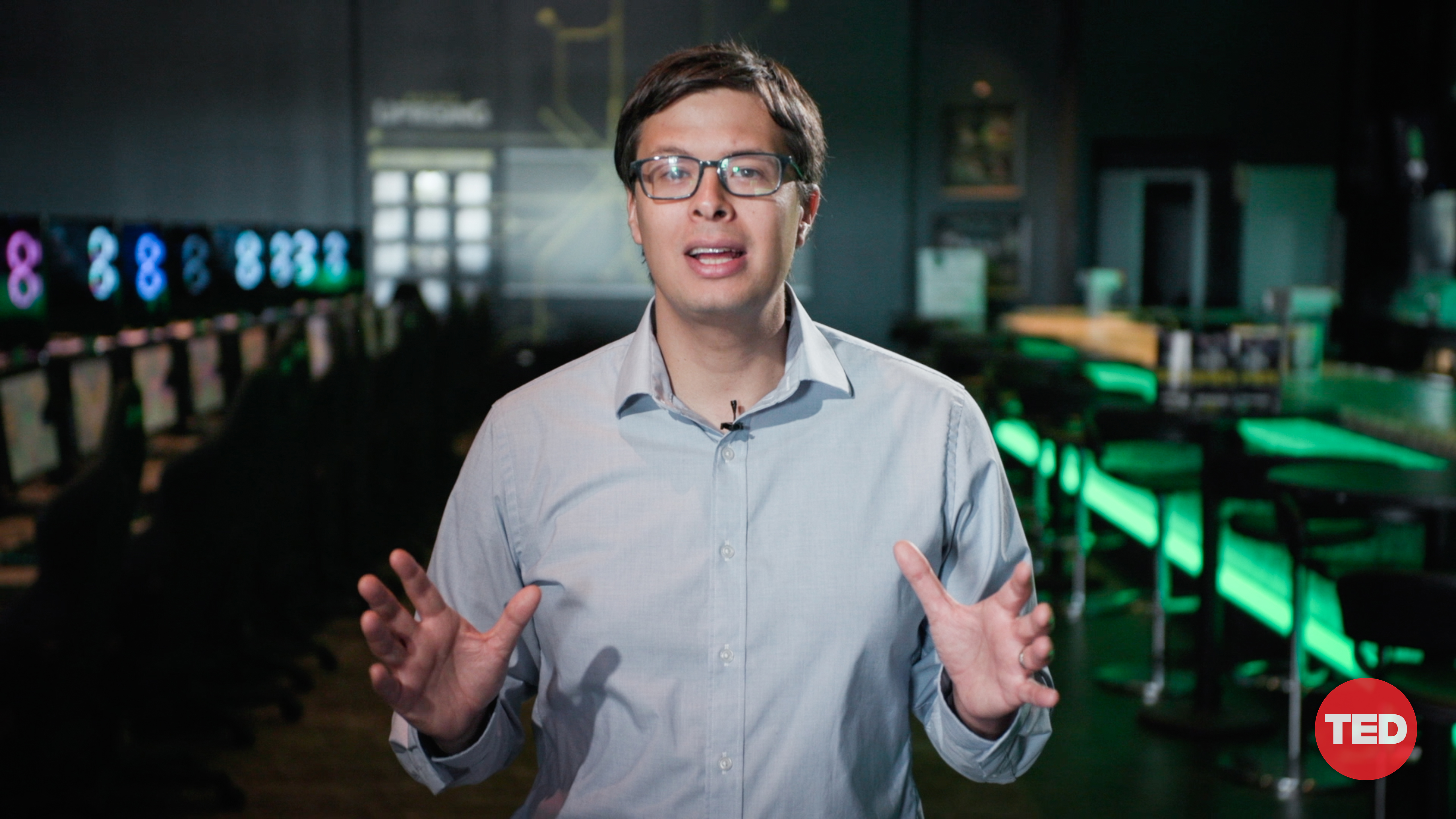
“Technology is fundamentally infiltrating every aspect of our daily lives, transforming everything from how we work to how we fall in love. Why should sports be any different?” asks esports expert William Collis. He speaks at TED@BCG on October 21, 2020. (Photo courtesy of TED)
William Collis, esports expert
Big idea: We revere traditional athletic prowess, but what about the skills and talent of a different sort of athlete?
What do you mean? Video games should no longer be considered children’s play, says esports expert William Collis. They’ve grown into a multibillion-dollar sporting phenomenon — to the point where traditional sport stars, from David Beckham to Shaquille O’Neal, are investing in competitive games like Fortnite, League of Legends and Rocket League. It takes real skill to be good at these video games, reminds Collis, which he breaks down into three main categories: mechanical (much like playing an instrument), strategic (equivalent to tactical choices of chess) and leadership. Beyond that, being a pro-gamer requires adaptability, creativity and unconventional thinking. Collis’s message is simple: respect the game and the valuable traits developed there, just as you would any other sport.
Bas Sudmeijer, carbon capture advisor
Big idea: Carbon capture and storage — diverting emissions before they hit the atmosphere and burying them back in the earth — is not new, but analysts like Bas Sudmeijer think it could both contribute to the fight against climate change and allow big polluters (who are also big employers) to stay in business. But for carbon capture to make a significant contribution to emission reductions, we must spend 110 billion dollars a year for the next 20 years.
How can we offset this enormous cost? Sudmeijer believes that “carbon networks” — clusters of polluters centered around potential underground carbon sinks — could solve the economic barriers to this promising technology, if they’re created in conjunction with aggressive regulation to make polluting more expensive. And the clock is ticking: current carbon capture operations trap only .1 percent of greenhouse gases, and we need to increase that number 100- to 200-fold in order to slow global warming. Fortunately, we have a historical model for this — the push to supply gas to Europe after World War II, carried out in a similar time frame during a period of similar economic stress.
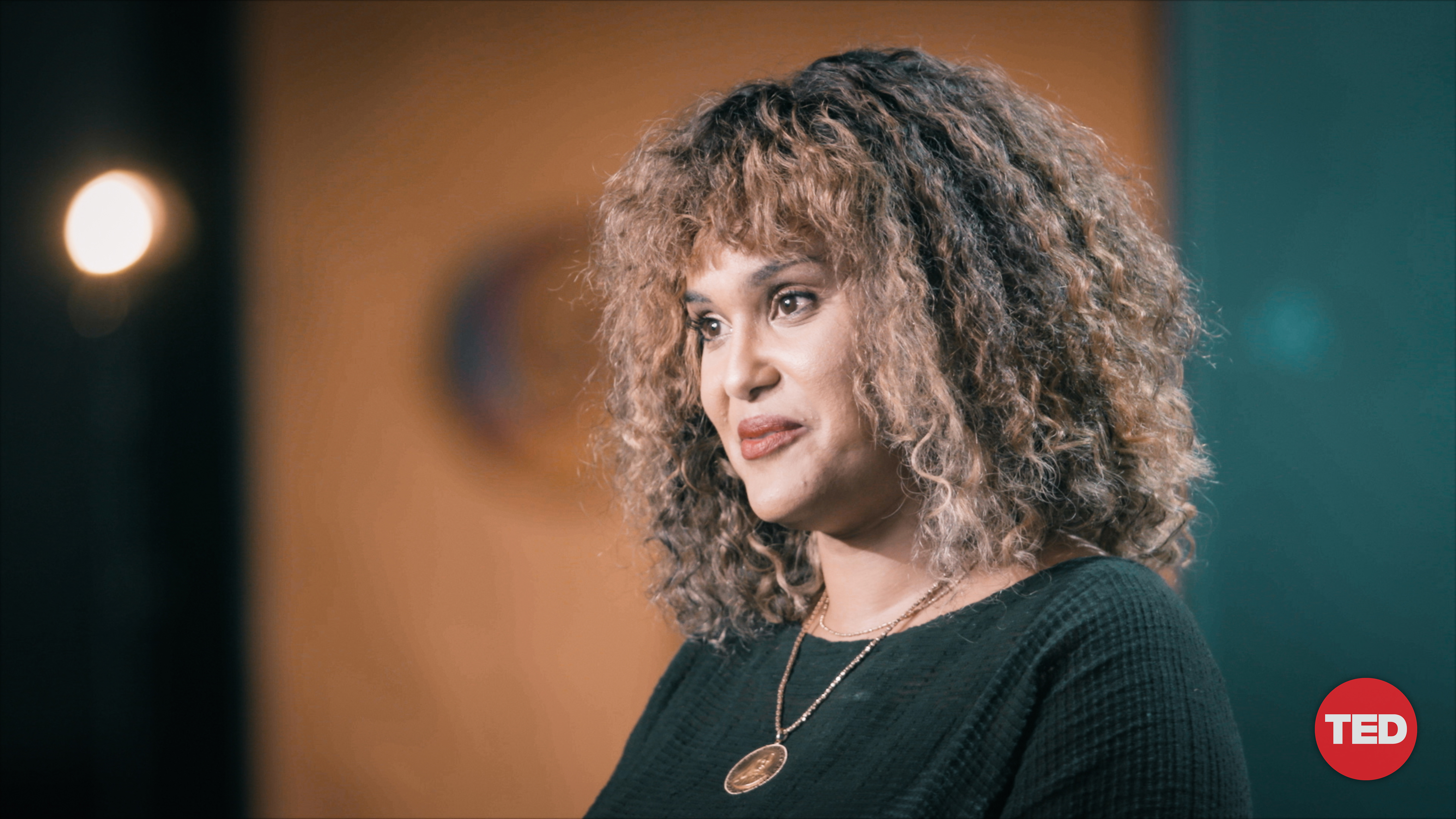
“One of the best ways to safeguard democracy is to expose everyone to each other’s stories, music, cultures and histories,” says Mehret Mandefro. She speaks at TED@BCG on October 21, 2020. (Photo courtesy of TED)
Mehret Mandefro, physician, filmmaker
Big idea: A robust and well-funded creative industry drives economic and democratic growth. A thriving creative industry isn’t just “a nice thing to have” — it’s a democratic necessity.
How? With a median age of about 19, Ethiopia’s youth are rapidly graduating into a labor market with an astronomical 19-percent unemployment rate and few opportunities. To create enough good-paying jobs for its expanding workforce, Mehret Mandefro says the government should expand the creative sector. She says that putting culture on the agenda could boost industries like tourism and drive the country’s overall economic growth. The creative industry also plays an important social and democratic role. In a period of strained relations and rising ethnic divisions, society must make a choice, she says: “From my perspective, the country can go one of two ways: either down a path of inclusive, democratic participation, or down a more divisive path of ethnic divisions.” For Mandefro, the answer is clear. She sees the arts as the best way for people to share in one another’s culture, where music, fashion, film, theater and design create connection and understanding between groups and strengthen democratic bonds. “One of the best ways to safeguard democracy is to expose everyone to each other’s stories, music, cultures and histories,” she says.
Antoine Gourévitch, deep tech diver
Big idea: The next chapter in the innovation story, driving us into the future, is the potential and promise of deep tech.
How? Antoine Gourévitch believes deep tech — tangible, intentional collaboration at the crossroads of emerging technologies (think synthetic biology, quantum programming and AI) — will change the ways we produce material, eat, heal and beyond. Deep tech ventures — one of the most notable examples being SpaceX — focus on fundamental issues by first identifying physical constraints that industries often encounter, and then solve them with a potent combination of science, engineering and design thinking. Thousands of companies and start-ups like this currently exist worldwide, sharing an ethos of radical possibility. They’re governed by four rules: be problem-oriented, not technology-focused; combine, intersect and converge; adopt a design thinking approach, powered by deep tech; and adopt an economical design-to-cost approach. In understanding these guidelines, Gourévitch wants us to embrace the idea that innovation requires rethinking, and that this cross-disciplinary approach could offer a revolution in making what seemed impossible, possible.
Tilak Mandadi, empathy advocate
Big Idea: Empathy training should be part of workplace culture. Here are three ways to implement it.
How? After the trauma of losing his daughter, Tilak Mandadi’s decision to return to work wasn’t easy — but his journey back ended up providing unexpected support in processing his grief. At first, he was full of self-doubt and sadness, feeling as if he was living in two completely different worlds: the personal and the professional. But over time, his coworkers’ friendship and purpose-driven work helped transform his exhaustion and isolation, shedding light on the role empathy plays in a healthy work culture — both for people suffering with loss and those who aren’t. Mandadi offers three ways to foster this kind of environment: implement policies that support healing (like time away from work); provide return-to-work therapy for employees who are dealing with grief; and provide empathy training for all employees so that they know how to best support each other. Empathy can be a learned behavior, he says, and sometimes asking “What would you like me to do differently to help you?” can make all the difference.
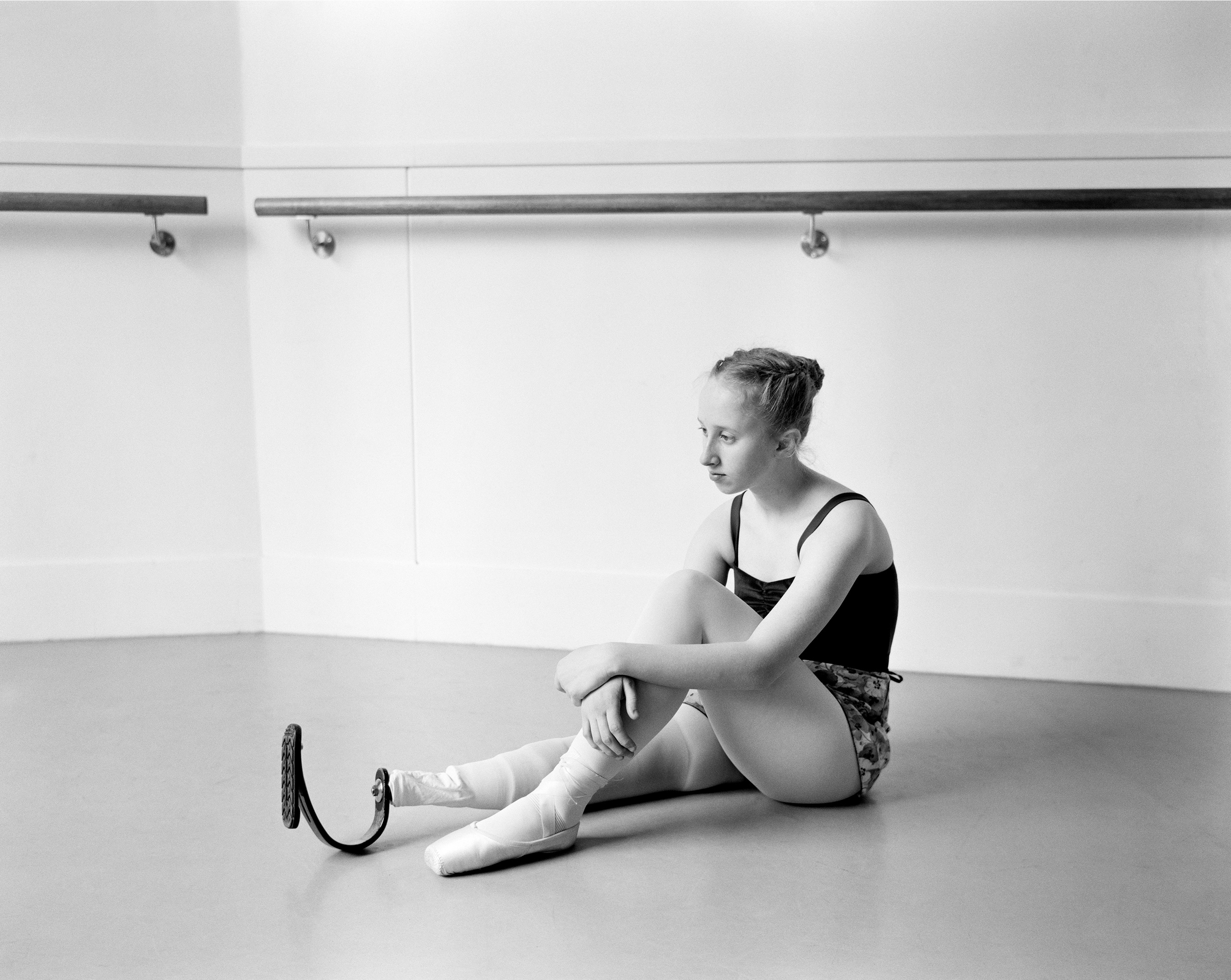
Documentary photographer Olivia Arthur presents her work at TED@BCG, including this photo of Pollyanna, who lost her leg in an accident at the age of two and now dances with the aid of a blade prosthesis. (Photo courtesy of Olivia Arthur)
Olivia Arthur, documentary photographer
Big idea: Across the world, people are merging technology with the human body in remarkable ways, sparking radical meditations on what it means to be human.
How? Through photography, Olivia Arthur intimately examines the intersection of humanity and technology, capturing the resilience and emotional depths of the human body. In her latest project, she collaborated with amputees who have integrated technology into their bodies and researchers who have invented robots with strikingly human traits. Inspired in part by photographer Eadweard Muybridge, Arthur focused on gait, balance and motion in both human and machine subjects. These included Pollyanna, a dancer who mastered the delicate skill of balance while using a blade prosthesis; Lola, a humanoid robot who confidently navigated an obstacle course yet looked most human when turned off; and Alex Lewis, a quadruple amputee who challenges perceptions of humanity’s limitations. Arthur describes her photos as studies of our evolution, documenting how technology has catalyzed a profound shift in how we understand, enhance and define the human body.
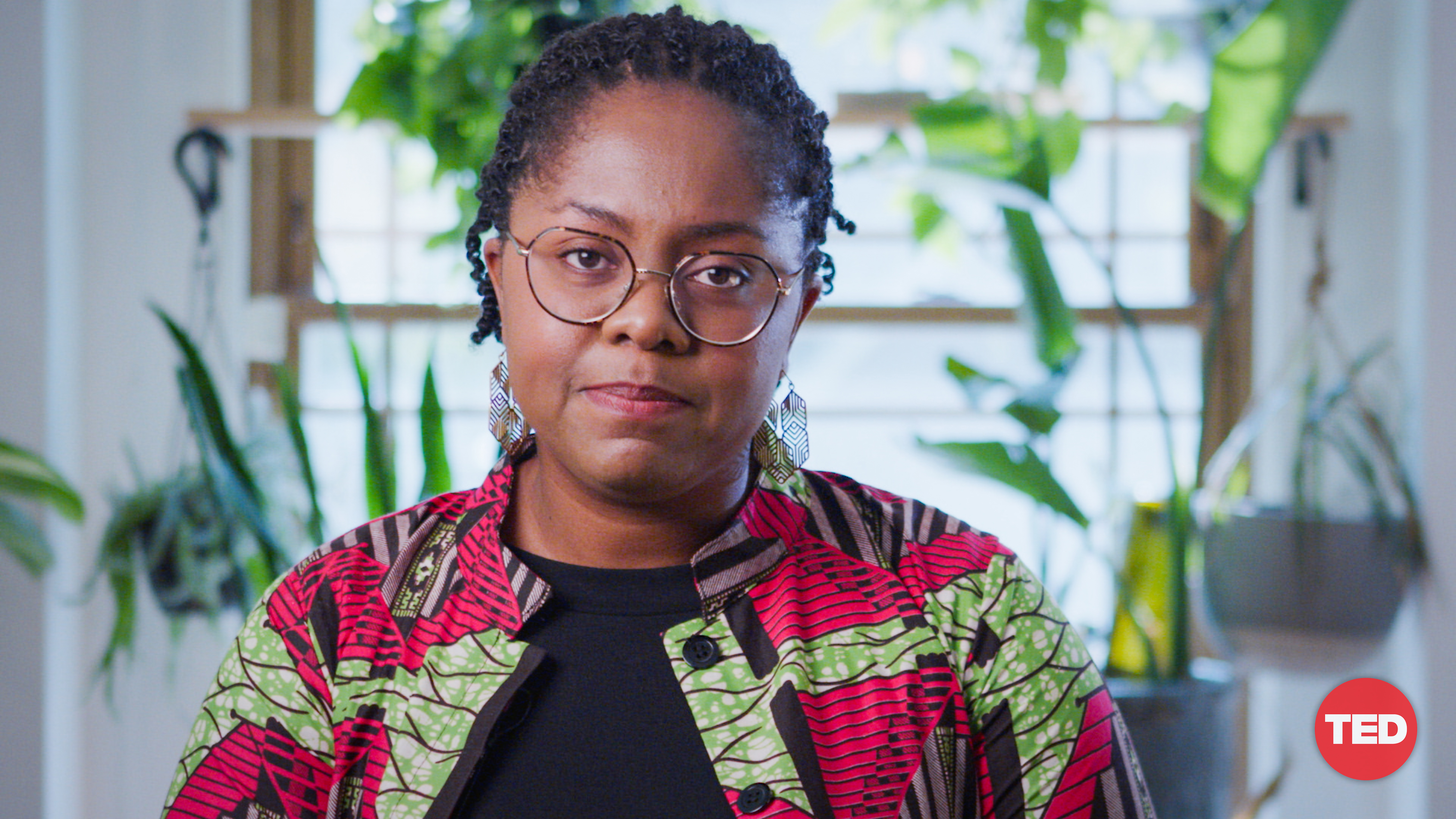
Wealth equity strategist Kedra Newsom Reeves explores the origins and perpetuation of the racial wealth gap in the US — and four ways financial institutions can help narrow it. She speaks at TED@BCG on October 21, 2020. (Photo courtesy of TED)
Kedra Newsom Reeves, wealth equity strategist
Big idea: We need to narrow the racial wealth gap in the United States. Financial institutions can help.
How? As last reported by the US federal government, the median wealth for a white family in the United States was 171,000 dollars, and the median wealth for a Black family was just 17,000 dollars — a staggering tenfold difference. During a global pandemic in which inequities across finance, health care, education and criminal justice have been laid bare, Kedra Newsom Reeves says that we must make progress towards reducing this gap. She tells the story of her great-great-grandfather, who was born into slavery, and how it took four generations for her family to accumulate enough wealth to purchase a house. Along the way, she says, a range of policies purposefully excluded her family — along with marginalized communities across the country — from building wealth. Now, financial institutions can help undo that damage. She offers four critical actions: ensure more people have bank accounts; increase awareness of checking and savings accounts specifically made for low-income communities; find alternative ways to establish creditworthiness, and then lend more credit to marginalized groups; and invest, support and promote Black-owned business, particularly by increasing the amount of venture capital that goes to Black founders.
Ishan Bhabha, constitutional lawyer
Big idea: Debate can broaden perspectives, spark creativity and catalyze human progress, so instead of censoring controversial speech, private entities should create pathways for productive discussion.
Why? In the United States, the First Amendment guarantees the right to free speech but only protects citizens against censorship by the government — not by private entities. But just because a conference center, university or social media platform can ban speech on their own turf doesn’t mean they should, says Ishan Bhabha. When faced with the decision to allow or prohibit meritless speech, he argues that more often than not, more speech is better. Instead of restricting speech, groups should err on the side of allowing it and work to create an open dialogue. “Ideas that have little to no value should be met with arguments against it,” he says. Private groups should protect against hate speech that can cause lasting damage or even violence but should respond responsibly to other ideological speech and mediate discussion, which can promote productive disagreement and lead to a valuable exchange of ideas. Universities, for instance, can offer students mediated discussion groups where they can openly try on new ideas without the threat of sanction. Twitter now responds to unsubstantiated posts on their platform by flagging content as either misleading, deceptive or containing unverified information and provides links to verified sources where users can find more information. Bhabha argues that these practices add to a rich and vigorous discussion with the potential to improve the arena of debate by raising the standard.
Johanna Benesty, global health strategist
Big idea: Discovering an effective COVID-19 vaccine is just the first step in ending the pandemic. After that, the challenge lies in ensuring everyone can get it.
Why? We’ve been thinking of vaccine discovery as the holy grail in the fight against COVID-19, says Johanna Benesty, but an equally difficult task will be providing equitable access to it. Namely, once a vaccine is found to be effective, who gets it first? And how can we make sure it’s safely distributed in low-income communities and countries, with less robust health care systems? Benesty suggests that vaccine developers consider the constraints of lesser health care systems from the outset, building cost management into their research and development activities. In this way, they can work to ensure vaccines are affordable, effective across all populations (like at-risk people and pregnant women) and that can be distributed in all climates (from temperature-controlled hospitals to remote rural areas) at scale. It’s the smart thing to do, Benesty says: if COVID-19 exists anywhere in the world, we’re all at risk, and the global economy will continue to sputter. “We need all countries to be able to crush the pandemic in sync,” she says.
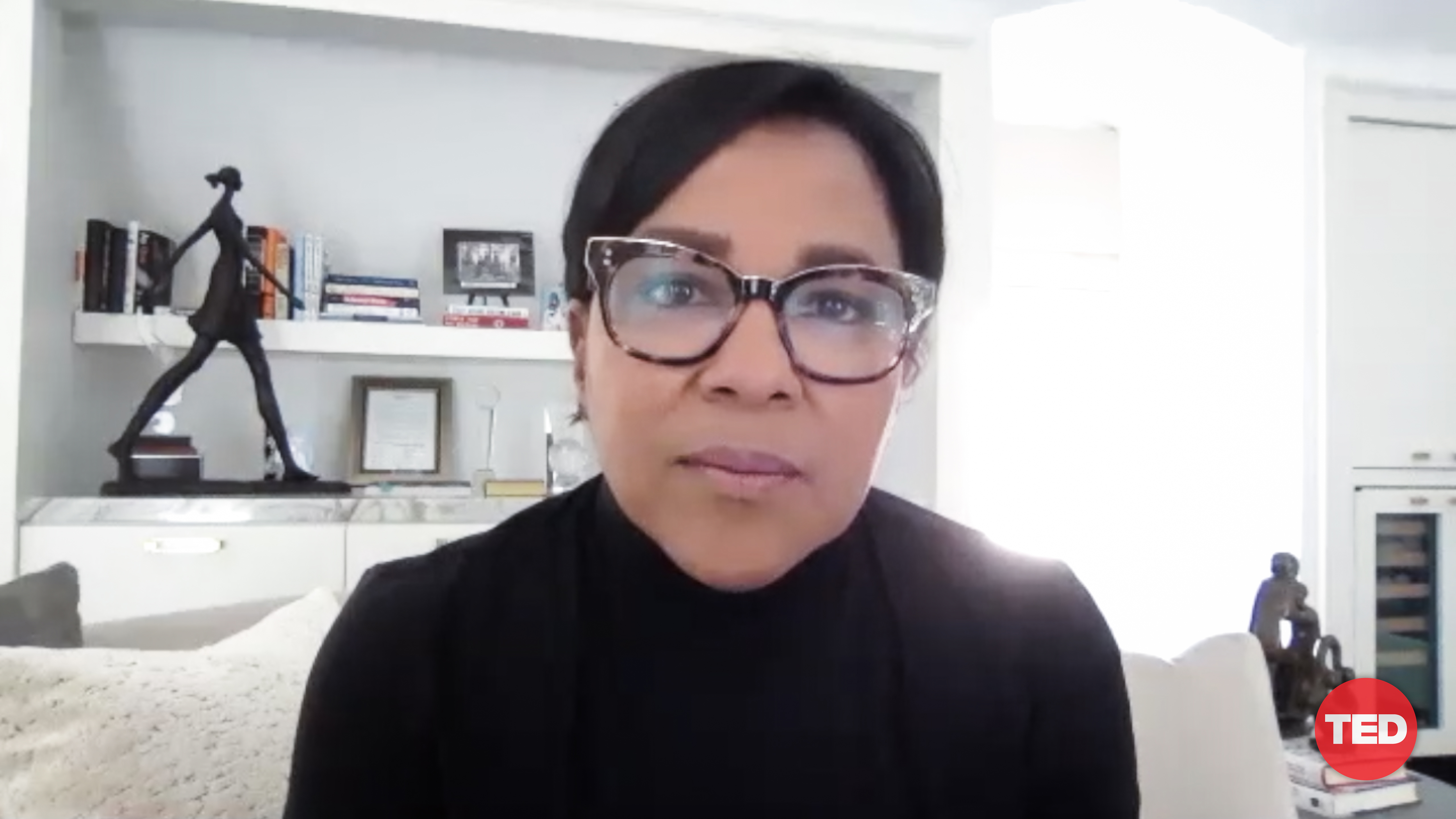
Rosalind G. Brewer, COO of Starbucks, explores how to bring real, grassroots racial changes to boardrooms and communities alike. She speaks with TED current affairs curator Whitney Pennington Rodgers at TED@BCG on October 21, 2020. (Photo courtesy of TED)
Rosalind G. Brewer, COO of Starbucks
Big idea: When companies think of DEI — diversity, equality, inclusion — they too often think of it as a numbers game that’s about satisfying quotas instead of building relationships with those who have traditionally been excluded from the corporate conversation. Rosalind G. Brewer believes that the current moment of racial consciousness is an “all-in” opportunity for hidebound leadership to step out of their comfort zones and bring real, grassroots racial changes to boardrooms and communities alike.
How? With Black Lives Matter in the headlines, the pandemic illuminating inequalities in health care and income, and so many brands engaging in “performative justice” PR campaigns, it’s a crucial time to not only include more BIPOC in the corporate workplace, but also to listen to their voices. As brands like Starbucks diversify and absorb the stories of their new partners, Brewer believes they will do far more than satisfy quotas — they will nurture future leaders, open minds and bring ground-up change to communities.
Kevin Roose, technology journalist
Big idea: By leaning into our creativity, empathy and other human skills, we can better collaborate with smart machines and “future-proof” our jobs.
How? Artificial intelligence has become smarter, faster and even more integrated into our lives and careers: algorithms have been trained to write financial articles, detect diseases and proofread legal documents at speeds and scales dramatically faster than any individual human could. But this doesn’t necessarily mean robots will inevitably replace us at work, says Kevin Roose. While an algorithm may be able to scan exams and detect disease faster than a human, a machine can’t replace a doctor’s comforting bedside manner. Instead of trying to compete with smart technologies at what they do best, we need to invest in developing the skills that machines aren’t capable of — creativity, compassion, adaptability and critical thinking.